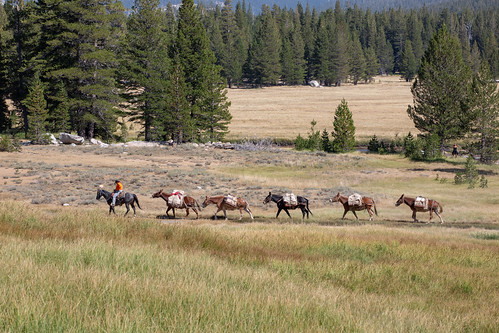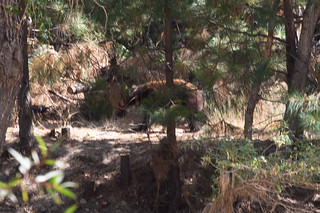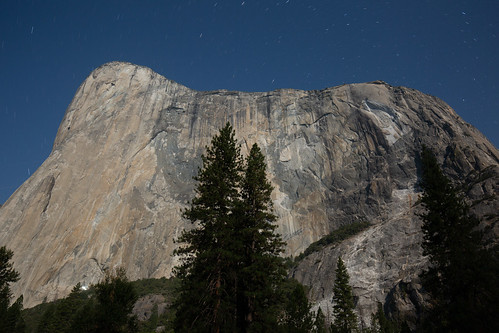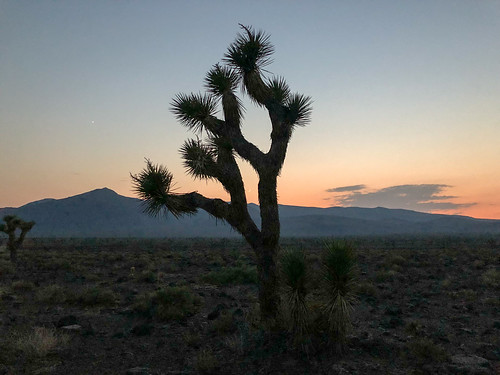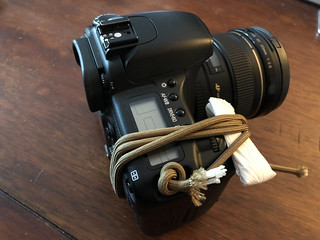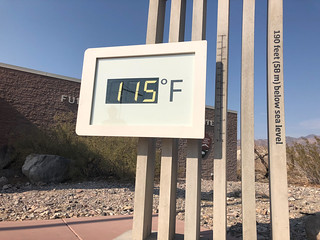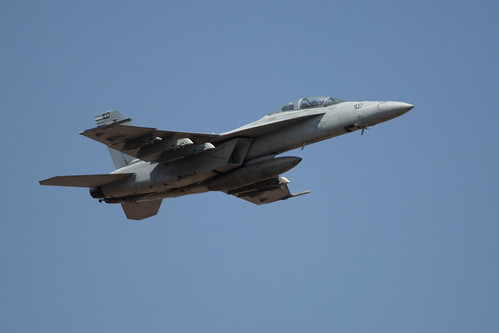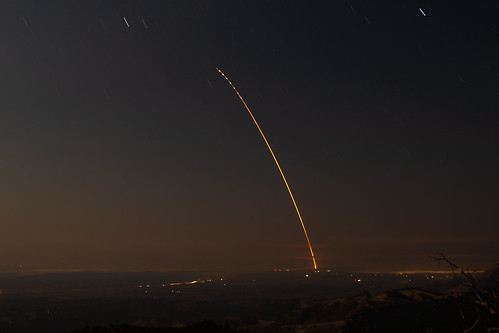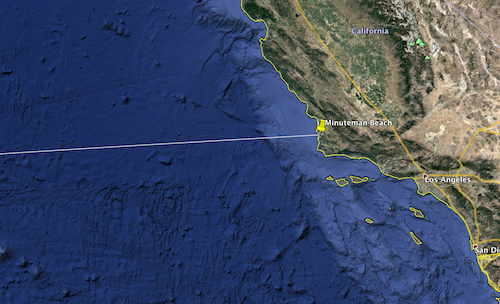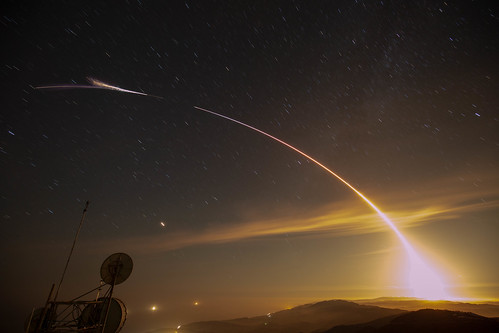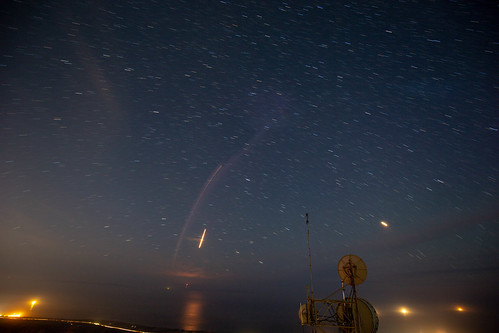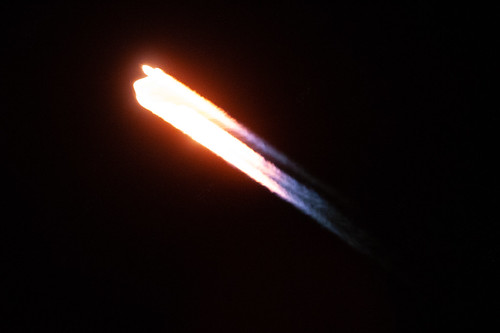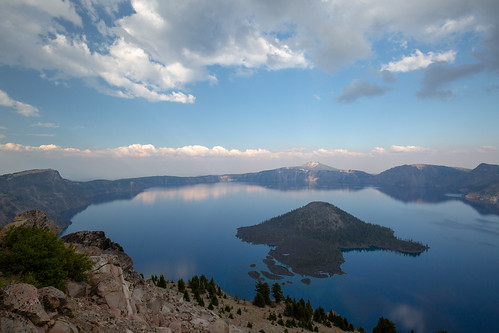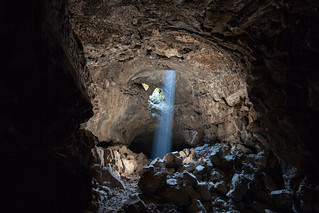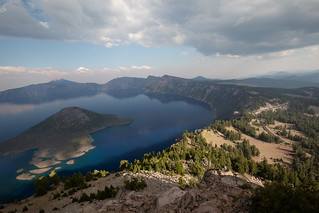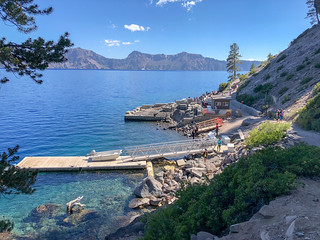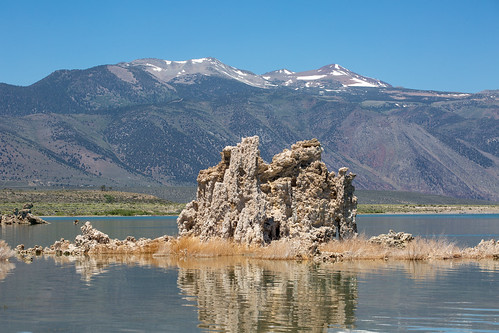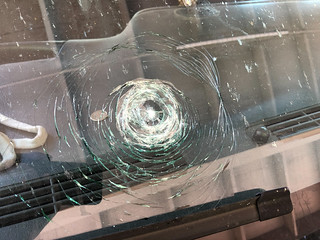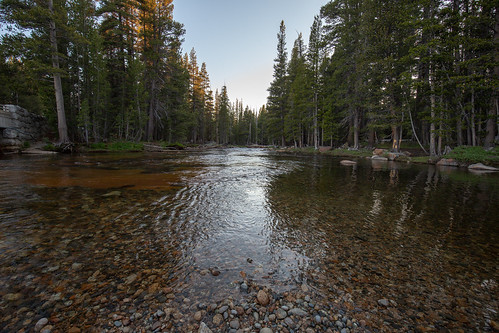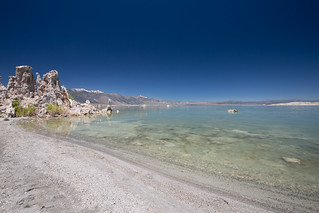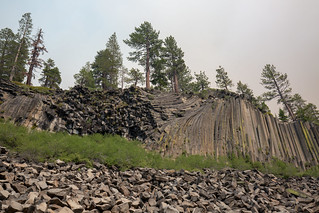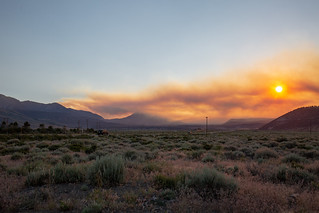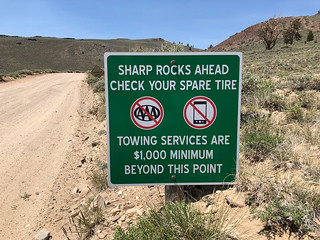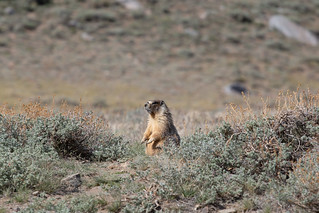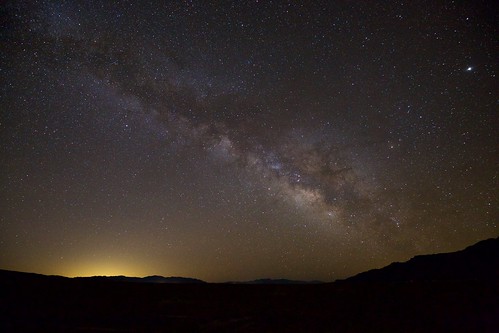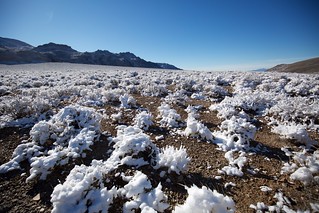[photos: flickr – Yosemite]
A couple of weeks ago a friend passing through Yosemite informed me the smoke had cleared up, highways and campgrounds were open again. In theory this meant there should be a lot of campsites available from to all the recent cancellations due to the park closure. I sat on this for a few days and by the weekend I was itching to go. I checked the reservation.gov website, all the campgrounds in the valley were still booked solid, but there were three nights available in the middle of the week at Tuolumne Meadows Campground. I grabbed them and left home on Tuesday afternoon.
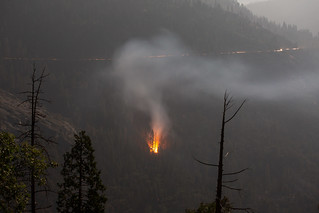 I arrived at the campground around 7 PM. The late list was posted with my assigned campsite, along with several warnings about bears in the area. The good news was that despite the recent Ferguson fires, camp fires were allowed above 8,000 feet. I pitched camp, wandered over to the store for firewood, started a fire and set in for the night. I had just received Chris Hadfield’s book An Astronaut’s Guide to Life on Earth from Amazon before I left, so that was my evening reading material under red headlamp light.
I arrived at the campground around 7 PM. The late list was posted with my assigned campsite, along with several warnings about bears in the area. The good news was that despite the recent Ferguson fires, camp fires were allowed above 8,000 feet. I pitched camp, wandered over to the store for firewood, started a fire and set in for the night. I had just received Chris Hadfield’s book An Astronaut’s Guide to Life on Earth from Amazon before I left, so that was my evening reading material under red headlamp light.
Coming from sea level, the altitude was not my friend. Moving around setting up my gear I was starting to get slightly lightheaded. It was cold at night and I tossed and turned many times trying to sleep. Before my last Death Valley trip I had given trying to find the slow leak in my Thermarest EvoLite (I even submerged it in the swimming pool) and bought a NeoAir on clearance from REI. For truck camping I didn’t really care about the weight or bulk of a pad very much. The NeoAir worked perfectly to keep me insulated from the cold ground, gave me cushion to sleep on my side, and best of all it wasn’t fucking deflated by the time I woke up!
Wednesday I had a bit of a headache and decided to take it easy until I acclimated a bit. I drove out to Lee Vining and back to scope out what was around me and what I had missed on the last trip. I had considered hiking up Lembert Dome or up to Elizabeth Lake, but not today. Instead I went over to Soda Springs and wandered around the meadows. It was nearly a full moon at night which did a great job of illuminating the mountains so I spent some time photographing around Tenaya Lake.
Thursday I drove over to Yosemite Valley, where I had wanted to hike the Valley Loop Trail. I found parking near Camp 4 and picked up the trail from there. Not too long after, I spotted a bear walking along the opposite bank of the Merced River before it disappeared back into the trees.
I intended to do the half loop, so I crossed over the river near El Capitan. In the meadow I spotted a pretty good spot to photograph the whole southern face of El Capitan. Using my long lens I was able to pick out a couple of climbers on the face of the rock. I still don’t know how they do it, even with bolts and rope.
Right after I passed Swinging Bridge on the south side, I sucked my Camelback dry. It was after 6 PM, I was annoyed by the flies, so I called it quits and cut back over to Camp 4. I drove up to Tunnel View after sunset to check it out, and wished I had gotten there about 30 minutes sooner for better light. I headed back to camp at Tuolumne Meadows for the night. Sitting by the campfire reading, a deer wandered by, completely undisturbed by my presence.
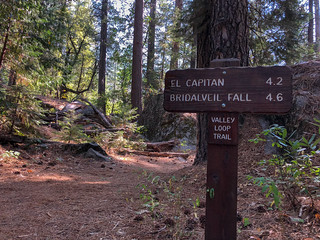 Friday morning I packed up camp, it was the last of my reservation. I got a bit of an earlier start, grabbed breakfast at the store, and returned to the valley. I was expecting it to be crazytown on a Friday afternoon, I got there right before noon and managed to beat most of the crowd. I wanted to finish off the half Valley Loop, I picked it up again at Camp 4 and headed east. I passed by Lower Yosemite Falls, it was bone dry. It turns out the Valley Loop Trail is considerably longer than the prescribed hiking guide tells you, not only does it go west toward Bridalveil Fall, it goes allllll the way east past Mirror Lake. I wasn’t about to go that far out, so I looped around Upper Pines and Half Dome village on the way back.
Friday morning I packed up camp, it was the last of my reservation. I got a bit of an earlier start, grabbed breakfast at the store, and returned to the valley. I was expecting it to be crazytown on a Friday afternoon, I got there right before noon and managed to beat most of the crowd. I wanted to finish off the half Valley Loop, I picked it up again at Camp 4 and headed east. I passed by Lower Yosemite Falls, it was bone dry. It turns out the Valley Loop Trail is considerably longer than the prescribed hiking guide tells you, not only does it go west toward Bridalveil Fall, it goes allllll the way east past Mirror Lake. I wasn’t about to go that far out, so I looped around Upper Pines and Half Dome village on the way back.
It was sometime around 4 PM when I made it back to where I left off Thursday at Swinging Bridge. I grabbed dinner and coffee, hung around for a while and headed back up to Tunnel View again before sunset. The light was great, but still smokey looking off down the valley. While I was there a bride and groom showed up with their photographers and took wedding photos.
After nightfall I stayed in the valley for a few more hours taking night shots. It was a full moon and it did a great job of illuminating the rock and trees. I was reluctant to wander back into the meadow at night by myself, but I did while making a bunch of racket along the way. I got my shots and bugged out!
I drove home after this and got in around 2 AM. I keep forgetting Yosemite is only about a 3 hour drive, I need to go out there more. I had wanted to go up to Glacier Point at night, but from reading the info signs I got the impression that you could only hike up or had to buy a bus ticket to get to the top. Only after I got home and looked at the maps I realized not only can you drive up there, there’s a snack shop up there. It wouldn’t have mattered though, I saw where the road was still closed due to the fires.
